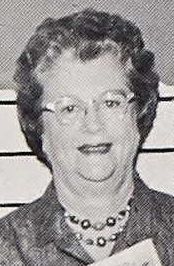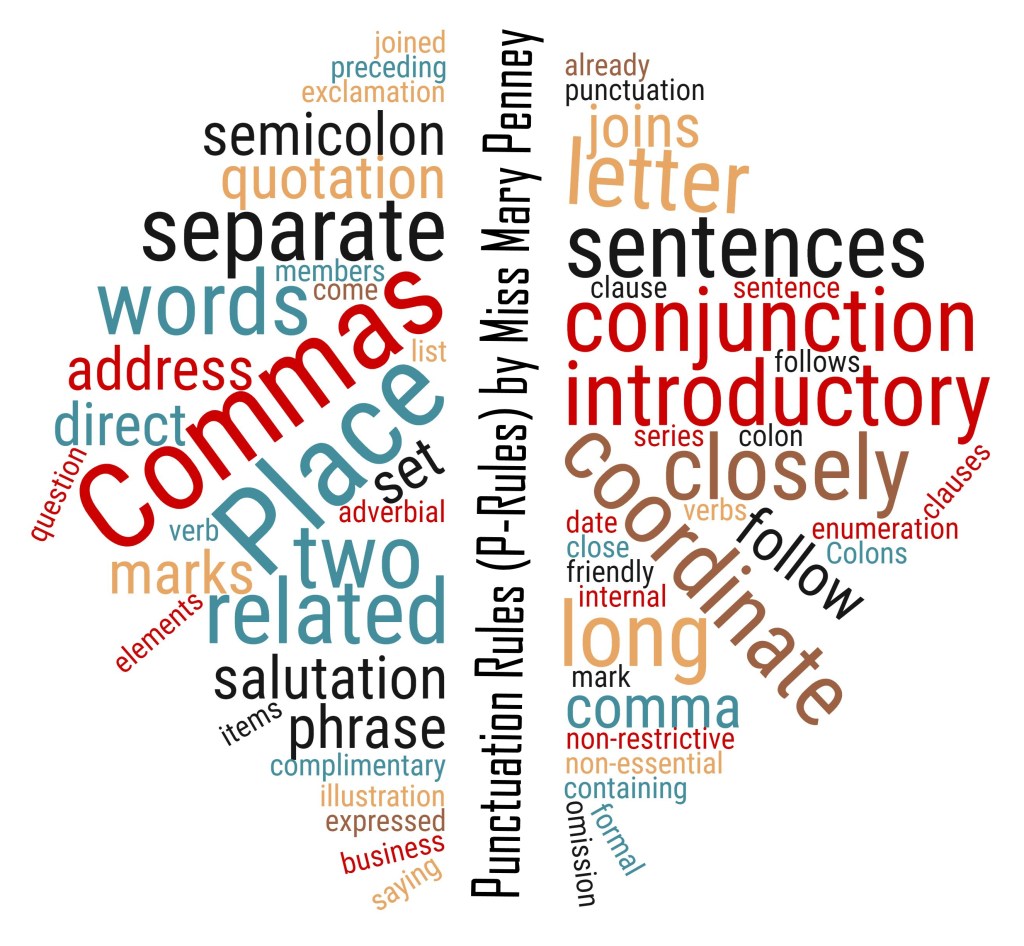 Miss Mary M. Penney, B.S., M.S.
Miss Mary M. Penney, B.S., M.S.
Needham B. Broughton High School, Raleigh, NC
Below is my transcription of Miss Penney’s famous P-Rules, which all of us had to memorize. Remember the pop quizzes, which featured questions such as, “What is the seventh word of P4?” And then she would hum the Rule, to give you a jump start!
I don’t care what anyone says. Memorizing these P-Rules and learning how to diagram sentences (both of which she insisted on) have been immense and valued gifts to me throughout my life. Thank you, dear Miss Penney!
(The picture at right is Miss Penney, from the 1964 Broughton yearbook The Latipac. Those of you who didn’t go to Broughton can puzzle on your own about the meaning of that title.)
| P1 | Place a comma before a coordinate conjunction (and, but, for, nor, or) when it joins two closely related sentences. |
| P2 | Place a semicolon between two closely related sentences not joined by a coordinate conjunction. |
| P3 | Place a semicolon before a coordinate conjunction that joins two closely related sentences, if there is internal punctuation, or if the sentence is very long. |
| P4 | Place a comma after an introductory adverbial clause, or a long introductory phrase, or any introductory phrase containing a verb. |
| P5 | Commas separate members of a series. |
| P6 | Commas set off non-essential (non-restrictive) elements. |
| P7 | Commas set off words of direct address. |
| P8 | Commas, question marks, or exclamation marks separate words of saying from the words of a direct quotation. |
| P9 | Commas follow the salutation of a friendly letter and the complimentary close of any letter; a colon follows the salutation of a business letter. |
| P10 | Commas separate and follow items of address or date. |
| P11 | Colons come before a formal list, an enumeration, an illustration, and a long quotation. |
| P12 | Commas mark the omission of verbs that have already been expressed in preceding clauses. |


Now, if I could just memorize this!
By: allisonTcain on 30 July 2012
at 6:27 pm
Thank you for posting these (I came here from a google search for this list).
I should also let you know that while Miss Penney is no longer at Broughton, her rules live on. The English teachers there still make their students memorize them, and I’m just as grateful as you are that this knowledge was forced into my head. -Broughton alumna, Class of 2005
By: crk on 10 January 2013
at 8:13 pm
Miss Penney taught me those rules – and many more things- about the proper use of the English language in 1958-59. Her teaching was by the old rote system wherein the student must learn the rules precisely and be able to recite them without error. One of her testing techniques was to have you cite the nth word in rule Pnn. She also gave pass/fail tests. You either achieved a perfect test score or you failed. She taught us discipline, honor, respect and many other things besides just English.
Because of Miss Penney, I did not have to take any English courses at UNC.
I never had a teacher or professor who was any better than Miss Penney.
By: Robert Hutchins on 26 February 2014
at 10:50 am
What about Mrs. Peacock?????
By: Virginia Palma Roberts on 27 April 2021
at 4:41 pm
Bad form, I know (to post twice on the same topic), however I must demur at the wording in the rules as posted. Where you read ” . . . closely related sentences” in the definitions, we were taught ” . . . independent clauses.”
The distinction means that you must know the difference between dependent and independent clauses, not just the meaning of the word “sentences.”
By: Robert Hutchins on 26 February 2014
at 10:55 am
Jewitt Thompson at Daniels Junior High in Raleigh taught me these famous P rules in 1978. It was a good break from diagraming sentences.
Thank you for sharing.
By: Chris Dillon on 29 August 2016
at 4:49 pm
Thanks for posting this!! I know our Miss Penny would be aghast at the teaching practices today.
By: Vada Palma on 27 April 2021
at 10:50 am